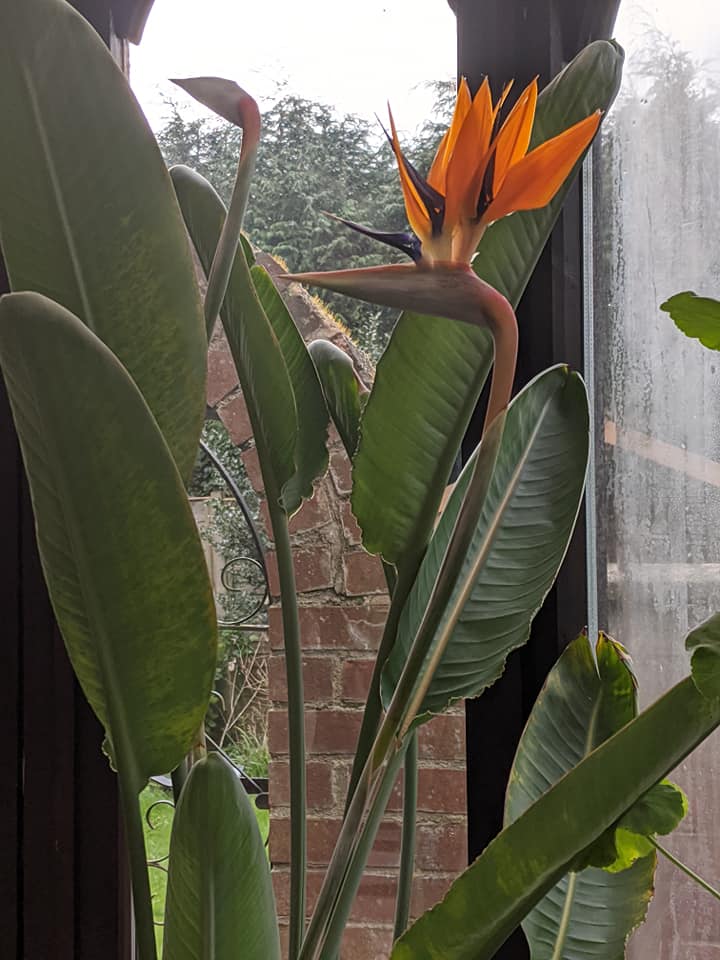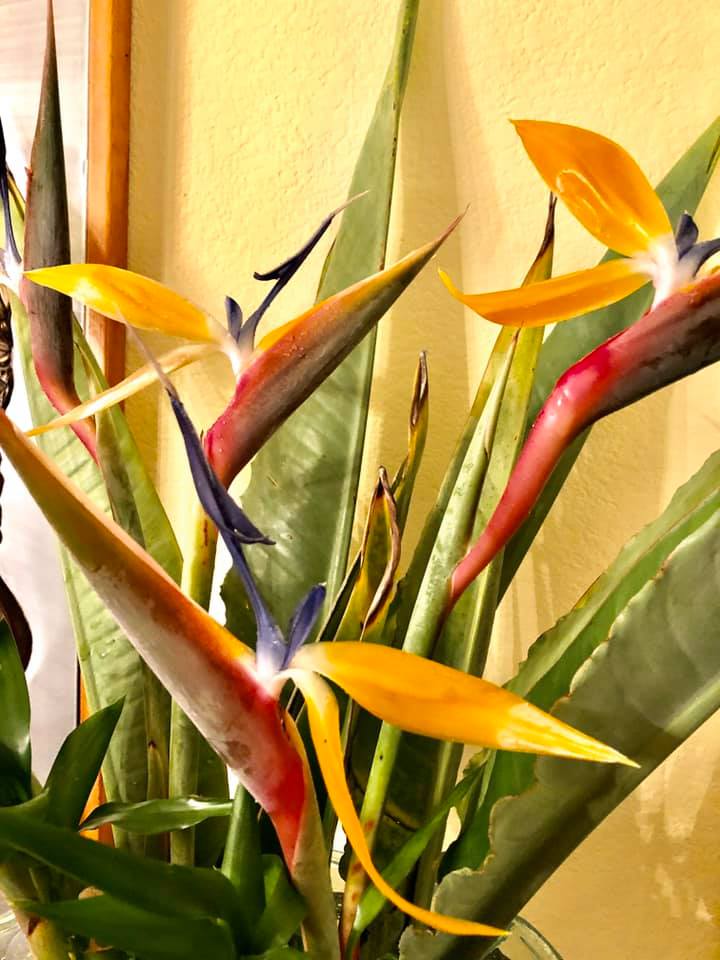
The Bird of Paradise (Strelitzia) is an exotic, eye-catching plant that transforms any indoor or outdoor space into a lush tropical paradise. With its bold, banana-like leaves and vibrant flowers resembling a bird in flight, this plant is a showstopper. But how do you ensure it thrives in your home or garden? Welcome to The Bird of Paradise Care Blueprint: Your Ticket to Tropical Plant Success—your ultimate guide to nurturing this stunning plant with ease.
Whether you’re a seasoned plant parent or a beginner, this guide will cover everything from lighting and watering needs to soil selection and common problems. Let’s jump right in and unlock the secrets to keeping your Bird of Paradise flourishing year-round!
I’ve provided detailed information in the article below to help with your concerns, However, if you still have questions or need more help, feel free to share photos of your plants or describe your issue on our Facebook Group. Just join the group and leave a comment on the most recent post — either I or someone from the community will respond as soon as possible. We also share helpful and unique plant care tips daily, so consider joining the group to stay updated!
What is the Bird of Paradise?

The Bird of Paradise belongs to the Strelitziaceae family and is native to South Africa. It thrives in warm, tropical climates and is a favorite among gardeners and interior decorators due to its striking foliage and unique flowers. Often mistaken for a banana plant due to its large, paddle-shaped leaves, this plant grows both indoors and outdoors, reaching heights of up to 6 feet indoors and even taller when planted outside.
Different Types of Bird of Paradise
There are five species in the Strelitzia genus, but the most commonly grown ones include:
- Strelitzia reginae – The most popular variety, known for its orange and blue flowers that resemble a tropical bird in flight.
- Strelitzia nicolai – Also known as the white Bird of Paradise, this variety has white and blue flowers and can grow up to 30 feet tall in the wild.
- Strelitzia juncea – Similar to S. reginae but with more slender, reed-like leaves, making it a unique choice for minimalist gardens.
Now that we know what makes this plant special, let’s move on to how you can ensure it thrives.
The Perfect Growing Conditions
1. Light Requirements – How Much Sun Does It Need?
The Bird of Paradise loves bright, indirect light but can also tolerate some direct sunlight. Here’s how to provide the best lighting conditions:
- Place it near a south or west-facing window indoors where it can receive bright light for at least 6 hours a day.
- Outdoors, plant it in a spot with at least 4–6 hours of direct sunlight per day for optimal growth.
- If your plant gets leggy, has slow growth, or its leaves are splitting excessively, it may not be getting enough light. Consider supplementing with a grow light if natural light is insufficient.
- Avoid too much harsh, direct sunlight in extremely hot climates, as this can scorch the leaves.
2. Watering – How Often Should You Water?
Watering is key to keeping your Bird of Paradise healthy. Follow these watering guidelines:
- Water once every 1–2 weeks, allowing the soil to dry out between waterings.
- During warmer months, increase watering frequency as needed to keep the soil slightly moist but never soggy.
- Use filtered or rainwater if possible, as tap water with high chlorine content may cause leaf browning.
- Overwatering can lead to root rot, so ensure your pot has proper drainage holes.
- In the winter months, reduce watering frequency as the plant enters a dormant state and requires less moisture.
3. Soil – What’s the Best Mix?
The right soil mix ensures good drainage and aeration. The ideal soil should be:
- Well-draining – A mix of potting soil, perlite, and sand works well to prevent waterlogging.
- Rich in organic matter – Adding compost or peat moss helps retain necessary nutrients and moisture.
- Slightly acidic to neutral – A pH range between 6.0–7.5 is ideal for healthy growth.
- For outdoor planting, ensure the soil is loose and well-aerated to promote root expansion.
Essential Care Tips
1. Humidity & Temperature – Creating the Perfect Environment
Since the Bird of Paradise is a tropical plant, it thrives in warm, humid conditions. Here’s how to maintain ideal conditions:
- Keep temperatures between 65–85°F (18–29°C). Avoid exposing the plant to temperatures below 50°F (10°C), as it may suffer from cold damage.
- Increase humidity with a humidifier, misting, or a pebble tray filled with water to create a moist microclimate.
- Avoid placing it near air vents, heaters, or drafts, as sudden temperature changes can stress the plant.
2. Fertilizing – How to Feed Your Plant
A well-fed Bird of Paradise produces vibrant, healthy foliage. Follow this feeding schedule:
- Use a balanced liquid fertilizer (10-10-10 or 20-20-20) every two weeks during spring and summer when the plant is actively growing.
- Reduce feeding to once a month in fall and winter when growth slows down.
- Organic options such as compost tea or fish emulsion can provide slow-release nutrients and improve soil health.
3. Pruning & Cleaning – Keeping It Tidy
Regular maintenance keeps your plant looking its best:
- Trim dead or damaged leaves to encourage new growth and prevent disease.
- Wipe leaves with a damp cloth to remove dust and enhance photosynthesis.
- Rotate the plant occasionally for even growth and to prevent it from leaning toward the light source.
Common Problems & Solutions
1. Yellowing Leaves
Causes: Overwatering, poor drainage, or nutrient deficiency.
Solution: Allow the soil to dry before watering and check for root rot. If the problem persists, consider repotting in fresh soil.
2. Leaf Splitting
Causes: Low humidity, excessive movement, or natural aging.
Solution: Increase humidity levels, keep the plant in a stable location, and avoid brushing against it frequently.
3. Brown Leaf Edges
Causes: Low humidity, underwatering, or excessive fertilizer use.
Solution: Mist the plant regularly, ensure consistent watering, and avoid chemical buildup in the soil.
4. No Blooms
Causes: Insufficient light, improper feeding, or a young plant.
Solution: Ensure at least 6 hours of bright light, fertilize appropriately, and be patient—mature plants bloom more often.
Propagation – Growing More Birds of Paradise
The best way to propagate a Bird of Paradise is through division, as growing from seed is slow and requires specific conditions.
Steps to Propagate by Division:
- Remove the plant from its pot and gently separate the root clumps.
- Ensure each division has at least one healthy shoot and roots.
- Repot in a well-draining soil mix and water lightly.
- Keep in a warm, humid location until new growth appears.
